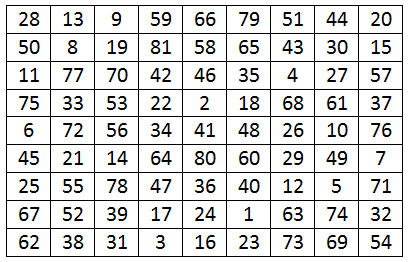
In 1991, David Collison sent this figure to Canadian magic-square expert John Henricks, with no explanation, and then died.
It’s believed to be the first odd-ordered bimagic square ever discovered. Each row, column, and diagonal produces a sum of 369. The square remains magic if each number is squared, with a magic sum of 20,049.
No one knows how Collison created it.
UPDATE: Wait, Collison’s wasn’t the first — G. Pfeffermann published a 9th-order bimagic square as a puzzle in Les Tablettes du Chercheur in 1891. (Thanks, Baz.)
